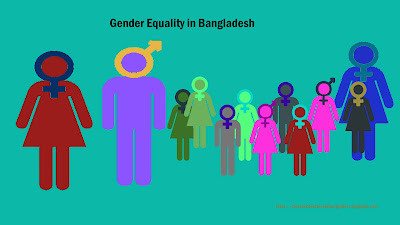Gender Equality in Bangladesh
Women’s opportunities and community participation have improved in recent decades. Progress has been made in eliminating gender in primary and secondary school admissions. The rapid growth of the ready-made garment sector provided employment opportunities for women and many women became members of the local council.
In 2008, the share of
Bangladeshi women was 26%. Women control blue collar jobs in the Bangladesh textile industry. Agriculture, Social Services, Health and Education The
employment of Bangladeshi women in major occupations and white positions has
increased slightly.
Bangladesh is ranked
129th with 49.2 points. A score of less than 60 indicates that gender equality
in that country is ‘too bad’. It is one of the 20 lowest countries in the world
and the second largest in Asia and the Pacific.
For all intents and purposes, Bangladesh has the highest score on STG2: Poverty and Nutrition, with a target rating of 80.1 and a global ranking of 70. Some of the main causes of drought are problems and inflation. In such cases, poor women are more vulnerable, which leads to malnutrition and malnutrition. In most cases, malnourished women are unable to contribute to any work.
Malnourished women are more likely to have low birth weight babies or children. Low birth weight babies are 20% more likely to die before the age of five. 60.4 points in the journal ‘Blood Supply in Pregnant Women’ (15-49 years) suggests that Bangladesh should go a long way to ensure that all women get proper nutrition. The highest ranking in Bangladesh is 69, which is STG10: Inequality.
Bangladesh has
excelled in STG2, which aims to eradicate hunger and provide food security for
all. However, Bangladesh has not yet reached the 69th position. Bangladesh, who
are in the top 100 with six goals, have 'bad' points on seven goals. Therefore,
we can conclude that Bangladesh still has a long way to go to achieve gender
equality by 2030 in line with the Sustainable Development Goals.






0 comments:
Post a Comment